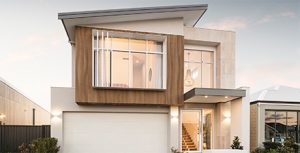The Australian Forest Products Association has renewed its call for an urgent housing stimulus package following yesterday’s Housing Industry Association forecast of an imminent, calamitous decline in new housing construction. Source: Timberbiz
New home sales have fallen by 22.8% since the introduction on COVID-19 restrictions, according the Housing Industry Association.
In March, new home sales fell to their lowest level on record and they fell further in April.
“In parallel, the number of cancellations of projects now exceeds 30% – this is more than four times the typical rate of cancellations,” HIA’s Chief Economist Tim Reardon said.
AFPA CEO Ross Hampton said the housing construction sector was the engine room for growth and jobs in Australia’s economy with more than one million Australians working across multiple industries.
“Australia’s timber industries supply most of the renewable timber products for new houses built in Australia and a substantial portion of multi-unit and commercial construction,” he said.
“Timber processing companies are already feeling the impact of the slowdown in construction. We estimate sawn timber demand will drop by at least 50% over the next six months and these dire forecasts are being backed up by HIA’s figures which are growing worse each month.”
Mr Reardon said that during shocks such as the GFC or the 2018 credit squeeze cancellation rates peaked at 17%.
“In net terms, this equates to a contraction of more than 50% in the volume of new building work in the future and this will begin to be felt across on-site activity in the second half of 2020,” Mr Reardon said.
Mr Hampton said that was why the AFPA, and a range of other industry bodies, were asking the Government to urgently consider a stimulus package for new homes and upgrades and renovations.
Each month HIA surveys the largest 100 home builders in Australia on their volume of sales (contract to build). These builders account for one third of new houses built in Australia.
“As this situation plays out through May, we expect to see on-site work begin to contract as early as July 2020, in some regions,” Mr Reardon said.
He said the COVID-19 impact followed a market slowdown which had been underway since mid-2018.
“This COVID-19 related contraction compounds the slowdown in the market that has been underway since mid-2018. The volume of home building underway at the end of March was already 18% lower than in mid-2018.
“This week HIA’s Trades Availability Index showed a marginal surplus of skilled trade’s people in the March quarter for the first time since 2013.”
The HIA expects the COVID-19 related contraction in building work will see a significant reduction in work hours on building sites in the second half of 2020.
“These skilled trades are typically small businesses and therefore will not be recorded as unemployed,” Mr Reardon said.
“Rather, they will initially work fewer days per week as work on their books shrinks. This will then drag on the prospect of an economic recovery across the economy into 2021.
“Even the removal of all COVID-19 restrictions will not prevent a material deterioration in work and employment in the home building sector in the second half of 2020 and into 2021.
“Unlike the re-opening of other sectors, the lead time for the home building pipeline is six to nine months, so even if the economy restarts on 1 July the supply of work in residential building will continue to decline into 2021,” he said.
“This would see home building in the December 2020 quarter at a level lower than during the 1990s recession, when the population was 32% smaller than today.”








